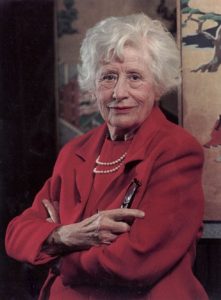Died in the Wool is the thirteenth novel by Ngaio Marsh. It is a cozy mystery featuring one of Marsh’s most popular detectives, Roderick Alleyn. Over a year after a missing woman, Florence Rubrick, turns up dead and packed into a bale of wool from her own wool farm, Roderick Alleyn is called to help solve the mystery. Florence’s nephew, Fabian, and her husband’s nephew, Douglas, are working on a secret military project together and they believe that espionage may have been involved in the case as well.
Roderick Alleyn is a pretty stereotypical gentleman detective, but is a strong and interesting character. “Alleyn possesses an ironic wit that often runs to facetiousness. His preciosity is offset by his self-deprecating manner and his natural egalitarianism in a class-conscious society”2. He has humor and intelligence that make him an effective protagonist of a mystery novel. He may not be as witty as Robert B. Parker’s Spenser, or Raymond Chandler’s Marlowe, but he makes the book more interesting.
Even though the detective was good and the mystery itself was intriguing, I expected more from one of the “Queens of Crime.” The beginning was exciting and the end was exciting, but the middle was fairly lackluster to me. There were a few moments where I was genuinely surprised, like when a scandalous affair was revealed, but other than that I was not very engaged. The characters take turns giving their perspectives of the night of Florence’s disappearance and everything that happened around it. It quickly becomes repetitive and I found myself skim reading more often than I’d like to admit.
The discovery of the body was the best part of the novel for me; even more so than the ending. Usually the ending of the novel is the most exciting part, and this novel definitely had an exciting ending, but the imagery of the worker sticking his hook into the bale of wool and discovering a mangled corpse was so intense. Marsh is known for her theatrical murders1 and it makes sense that this would be the most interesting point of the novel.
The intended audience is definitely an educated middle class reader. The book is not too complicated, but it also takes some time to get through and some dedication to deeply reading it. It’s a cozy, but it has themes of espionage and a twist of political intrigue, making it not the cookie-cutter cozy that readers would be used to. I think that this was probably a great move in order to draw more readers in, and I liked how it defied my personal expectations of what a cozy would be.
There was a television adaptation in 1978, when a miniseries of the same name was released in New Zealand, Ngaio Marsh’s home country and the setting of the novel. It was a pretty faithful adaptation, and the changes made in it were small. It was cheesy and it is obviously dated when you watch it with a modern eye, but it gets the main story across and it does so in an entertaining way. It feels like something you would catch on PBS on a rainy afternoon. In fact, I might recommend the television adaptation over the novel because the television series is much more condensed and does not drag on.
OVERALL: 6/10
I think that this book had very interesting ideas, but it definitely got boring in the middle. If it were more fast paced and a little less repetitive, I think I would have liked it a lot better. The story was original and the ending was unexpected, though, so I must give credit where credit is due, especially to one of the most revered crime writers in the history of the mystery genre.
Sources Referenced:
- Karbiener, Karen, and George Stade. “Marsh, Ngaio.” Encyclopedia of British Writers, 1800 to the Present, Third Edition, Facts On File, 2013. Bloom’s Literature, online.infobase.com/HRC/Search/Details/31909?q=ngaio marsh. Accessed 30 Nov. 2017.
- Magill, Frank Northen, and Carl Edmund Rollyson. Critical Survey of Mystery and Detective Fiction. Salem Press., 2008.
- Marsh, Ngaio. Died in the Wool. 1st ed., Little, Brown and Company, 1945.


